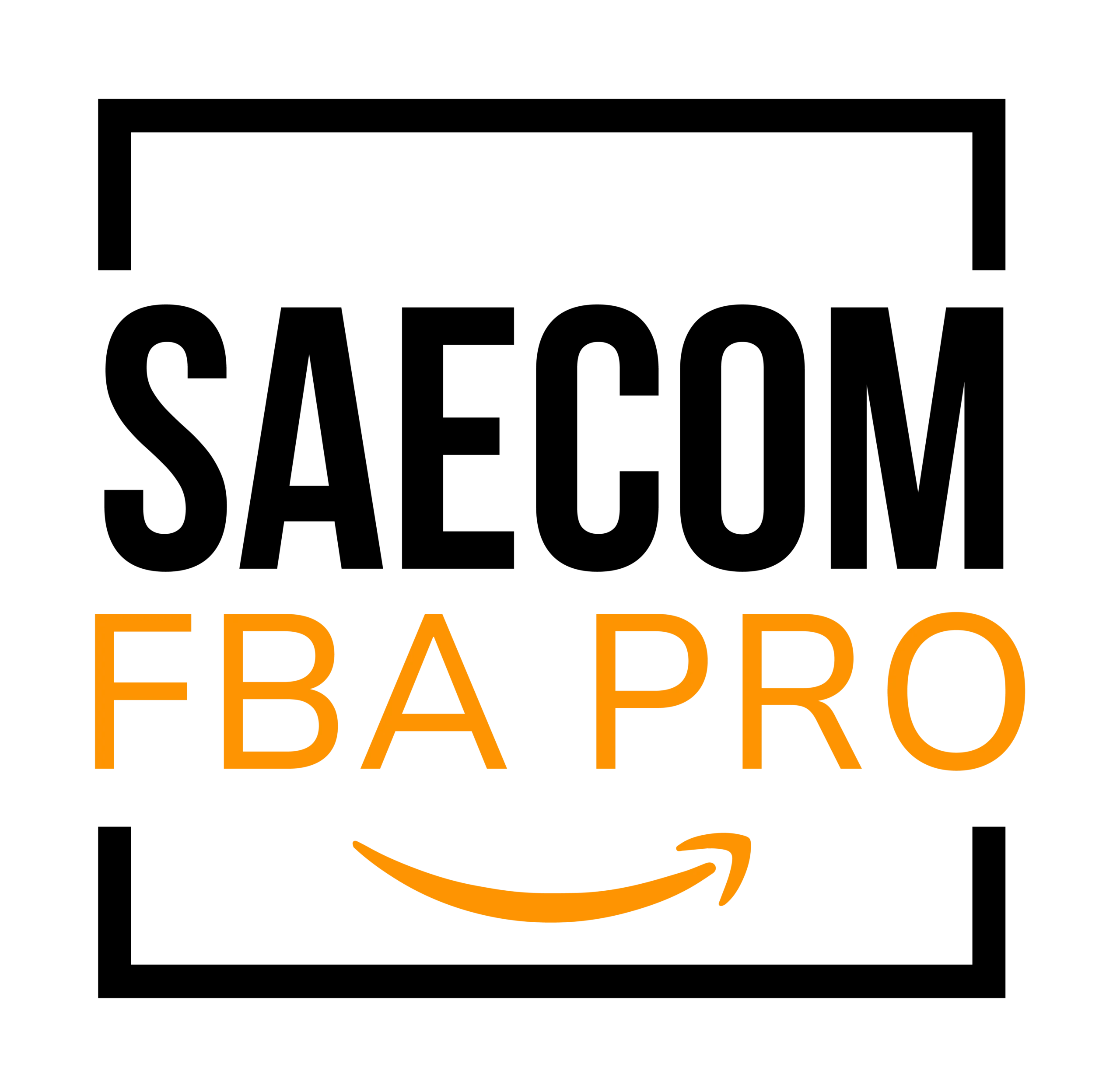Walmart vs Amazon: Which Marketplace Wins in 2025?
When it comes to eCommerce powerhouses, Walmart vs Amazon remains a defining debate shaping today’s retail industry. Both platforms dominate in their own ways, offering distinct strategies that cater to different types of customers and sellers.
Amazon currently controls nearly 40% of all U.S. online sales, but Walmart has quickly climbed to become the second-largest online retailer, steadily expanding its digital footprint.
For sellers and brands, establishing a presence on at least one of these marketplaces is vital for growth. However, deciding between selling on Walmart vs Amazon requires understanding their unique advantages, challenges, and requirements.
This comprehensive guide breaks down the comparison across nine essential factors to help you decide which platform aligns best with your eCommerce strategy.

Retail and E-commerce Market Share
Let’s start with some clear data on Amazon and Walmart’s e-commerce dominance and how both perform in the U.S. retail landscape.
Amazon Still Leads the E-commerce Market
In 2023, Amazon maintained its stronghold, capturing 37.6% of U.S. eCommerce spending, translating to almost $2 of every $5 spent online.
The pandemic further boosted Amazon’s reach as online shopping surged. During Q3 2023, Amazon reported $143.08 billion in net sales, marking a 13% year-over-year growth. Over a twelve-month period ending September 2023, sales reached $554.02 billion, a 10.32% rise.
More than 50% of American households now have Amazon Prime, solidifying Amazon’s dominance. With its robust digital infrastructure, Amazon remains well-positioned to lead eCommerce in the coming years.
Walmart’s Digital Momentum Is Growing
Walmart, once known primarily for in-store dominance, is now Amazon’s strongest competitor online.
By October 2023, Walmart’s online sales share rose from 5.4% in 2019 to 6.4%, driven largely by booming online grocery orders and the convenience of pickup and delivery services.
Leveraging over 7,000 local stores for fulfillment gives Walmart a significant logistical advantage, especially in essential goods categories like groceries and cleaning supplies.
As a result, the Amazon vs Walmart battle continues to redefine the future of online and offline retail.
Selling Fees
When comparing Walmart vs Amazon, one of the most crucial factors for sellers is cost. How do their fee structures stack up?
Amazon: Higher Costs, But Greater Reach
Amazon operates on a subscription-based model. Sellers can choose between:
- Individual Plan – $0.99 per sale (up to 40 sales/month)
- Professional Plan – $39.99 per month
Amazon also charges referral fees (8–15% per sale) and additional costs for using Fulfillment by Amazon (FBA), such as:
- Pick & pack fees (per item)
- Storage fees (~$2.40/cubic ft, higher in Q4)
- Removal or return fees for unsold inventory
Although these costs can add up, sellers gain access to high sales volumes and Prime customers, making the investment worthwhile for many.
Walmart: Simpler Fee Model, Lower Costs
Walmart’s structure is more straightforward. There’s no monthly subscription fee — sellers only pay:
- Referral fees (6–20% based on category)
- Fulfillment fees (if using Walmart Fulfillment Services, WFS)
While Walmart’s marketplace generates lower sales volumes compared to Amazon, sellers benefit from reduced overhead costs and less competition.
One important factor: Walmart requires UPC or GTIN barcodes for all listings, which can add costs for new sellers.
In short, Amazon offers scale, while Walmart offers simplicity and lower risk.
Onboarding and Listing
Amazon: Fast Setup, Constant Policy Changes
Amazon’s onboarding process is quick and mostly automated. After registering a Professional account and verifying details, sellers can immediately start listing products.
However, the challenge lies in staying compliant. Amazon’s policies change frequently across its vast catalog of categories, requiring sellers to remain vigilant.
The platform’s automation makes launching products easy, but policy shifts can be overwhelming for beginners.
Walmart: Rigorous Vetting, More Stability
Unlike Amazon, Walmart enforces a strict application and review process. Applicants must provide detailed business information, sales history, and proof of performance capabilities.
The approval process can take 6–8 weeks, and new sellers face additional listing requirements, such as sample submissions and UPC codes.
While Walmart’s entry barriers are higher, approved sellers enjoy greater transparency, stability, and dedicated support once accepted.
Pricing and Buy Box Competition
Amazon: Highly Competitive, Data-Driven Pricing
Amazon’s Buy Box is the holy grail for sellers — but winning it is tough. Over 2 million active sellers compete for this prime position.
Key factors influencing Buy Box eligibility include:
- Using FBA for fulfillment
- Offering competitive pricing
- Maintaining strong performance metrics and feedback
Automated repricing tools help sellers stay competitive, but pricing pressure remains fierce.
Walmart: Less Competition, Strict Price Rules
Walmart hosts around 150,000 sellers, far fewer than Amazon, making it easier to win the Buy Box.
However, Walmart enforces strict pricing policies, such as:
- Price Parity Rule: You can’t list a lower price elsewhere online.
- Price Leadership Rule: You must match or beat competitors’ prices.
Automated repricing tools are banned, meaning sellers must adjust prices manually.
This approach offers stability but limits flexibility — a trade-off sellers must weigh carefully.

Shipping and Fulfillment
Amazon: FBA Dominates the Game
Amazon’s Fulfillment by Amazon (FBA) program is a major selling point, offering fast, reliable delivery and access to Prime customers.
While FBA simplifies logistics, it comes with challenges like storage costs and strict product eligibility rules. Still, with over 110 fulfillment centers and a massive logistics network, Amazon remains unmatched in delivery speed and reliability.
Walmart: WFS and Hybrid Fulfillment Models
Walmart’s Fulfillment Services (WFS) mirrors Amazon’s FBA, letting sellers send inventory to Walmart’s warehouses for handling and delivery.
For sellers not enrolled in WFS, Walmart allows Fulfilled by Merchant (FBM) options and partnerships with 3PL providers like ShipBob, ShipHero, and Easyship to offer two-day shipping.
Though smaller in scale, Walmart’s fulfillment system is rapidly improving, especially with its network of stores doubling as mini distribution hubs.
Performance Standards
Amazon: Strict Seller Performance Metrics
Amazon measures sellers using three key metrics:
- Order Defect Rate: <1%
- Pre-Fulfillment Cancel Rate: <2.5%
- Late Shipment Rate: <4%
Failure to meet these can lead to account suspension. Amazon enforces these metrics rigidly to maintain customer trust and service quality.
Walmart: Focused Metrics, More Leniency
Walmart tracks:
- Order Defect Rate: <2%
- On-Time Shipment Rate: >99%
- Valid Tracking Rate: >99%
Walmart is more forgiving with performance issues, offering probationary periods and support for sellers to improve.
This collaborative approach makes Walmart more beginner-friendly compared to Amazon’s strict oversight.
Customer Service Standards
Amazon has revolutionized customer service through Prime perks, ultra-fast delivery, and 24/7 support. However, this also means higher seller accountability — even minor missteps can result in penalties.
Walmart, on the other hand, reflects its traditional retail roots. Customer service expectations are less rigid, focusing more on pricing competitiveness and functional assistance.
Amazon customers expect speed and convenience; Walmart customers value affordability and reliability.
Final Thoughts: Walmart vs Amazon — Which Is Better?
Ultimately, there’s no single “best” marketplace — it depends on your business goals.
If your priority is high-volume sales and scalability, Amazon is the way to go.
If you value control, stability, and lower costs, Walmart may be the better fit.
Sellers should weigh factors like fees, fulfillment options, and competition levels before committing. Regardless of your choice, leveraging data, automation tools, and strong pricing strategies will maximize your success.
Both Amazon and Walmart continue to evolve — and staying informed will keep your business ahead of the curve.


